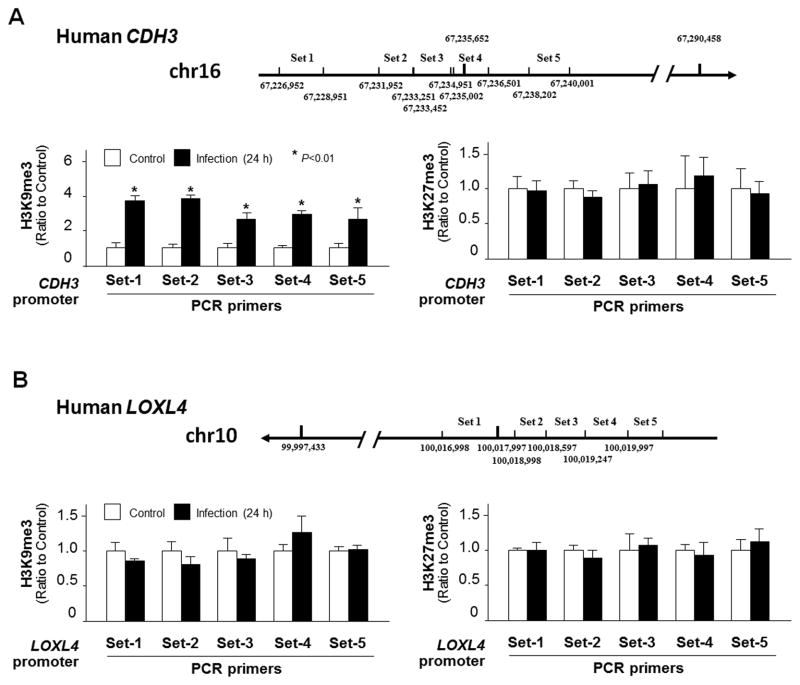Fig. 4.
Enrichment of H3K9me3 within the CDH3 gene locus, but not for the LOXL4 gene locus, in HCT-8 cells following Cryptosporidium parvum infection. (A) Levels of the suppression markers, H3K9me3 and H3K27me3, associated with the CDH3 gene locus in HCT-8 cells following C. parvum infection. Cells were exposed to C. parvum infection for 24 h, followed by Chromatin immunoprecipitation (ChIP) analysis using anti-H3K9me3 or anti-H3K27me3, respectively, and with designed five pairs of PCR primers specific to the various promoter regions of the CDH3 gene (Set1 – Set5; see more details in Supplementary Table S1). The non-infected cells were used as the control (Ctrl). Increased enrichment of H3K9me3, but not H3K27me3, was detected in the CDH3 gene locus in cells following infection. (B) Levels of the suppression markers, H3K9me3 and H3K27me3, associated with the LOXL4 gene locus in HCT-8 cells following infection. Cells were exposed to C. parvum infection for 24 h, followed by ChIP analysis using anti-H3K9me3 or anti-H3K27me3 and with designed PCR primers (Set1–5) covering the regulatory promoter regions of the LOXL4 gene locus. No significant increase in the enrichment of H3K9me3 or H3K27me3 was detected in the LOXL4 gene locus in cells following infection. Data represent means ± S.E.M. from three independent experiments. *P<0.01, ANOVA compared with non-infected cells.

